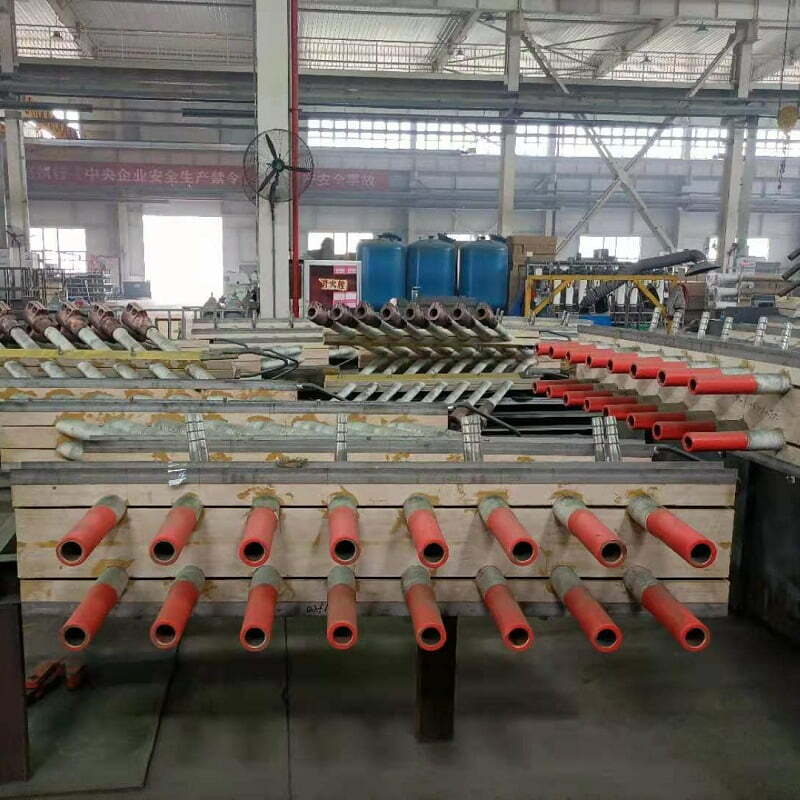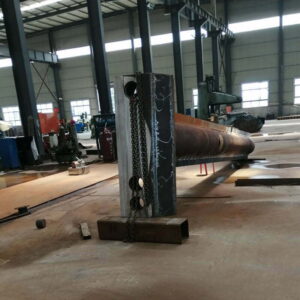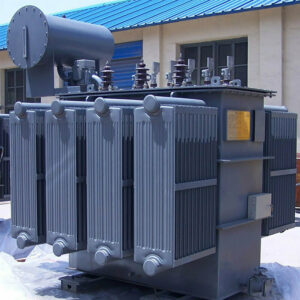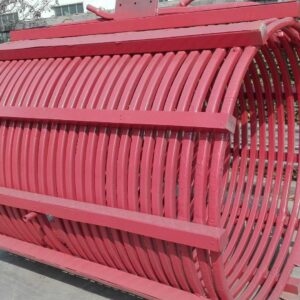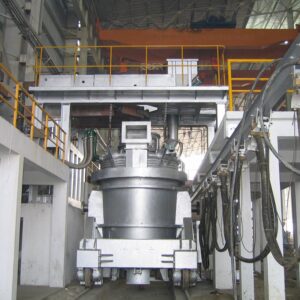Description
Short Network of Submerged Arc Furnace (SAF) is the high current line from the secondary side of the transformer to the electrode.
Generally, it refers to the hard busbar part, which is divided into two types: copper tube type and copper row type.
Features of SAF Short Network
At present, tubular short nets are mostly used. The features as follows:
(1) The short net and the copper tile can be connected in series to form a water circuit.
The cooling water path is: short net → water-cooled cable → conductive copper tube → copper tile → conductive copper tube → water-cooled cable → short net → phase-modulated water-cooled cable → transformer tubular outlet pipe → Phase-modulated water-cooled cable → short net, and then discharged.
(2) Because the short network can be cooled by water, the current density of the SAF short network and the water-cooled cable is increased several times, and the weight of the short network is greatly reduced.
The submerged arc furnace is an industrial electric furnace with huge power consumption.
Mainly composed of a furnace shell, furnace cover, furnace lining, short net, water cooling system, smoke exhaust system, dust removal system, electrode shell, electrode pressing and lifting system, loading and unloading system, controller, burn-through device, hydraulic system, submerged arc furnace transformers and various electrical equipment.
According to the structural characteristics and working characteristics of the SAF, 70% of the system reactance of the submerged arc furnace is generated by the short grid system, and the short grid is a system with high current operation,and the maximum current can reach tens of thousands of amperes.
The performance determines the performance of the submerged arc furnace.
It’s for this reason that the natural power factor of the SAF is difficult to reach above 0.85, and the natural power factor of most furnaces is between 0.7 and 0.8.
A lower power factor not only reduces the efficiency of the transformer and consumes a lot of wasted power, but also imposes additional power fines by the power department.
At the same time, due to the manual control of the electrodes and the stacking process, the power imbalance between the three phases increases, and the highest unbalance can reach more than 20%, which leads to low smelting efficiency and high electricity costs.
Reducing the imbalance of the power grid has become an effective means to reduce energy consumption and improve smelting efficiency.
If appropriate measures are taken to improve the power factor of the SAF short network, the following effects can be achieved:
(1) Reduce power consumption by 5~20%;
(2) Increase production by more than 5%~10%
Short Network Trends
At present, some units have taken measures to compensate for reactive power at the low-voltage side to solve the above problems.
Compensation at the short grid side can greatly improve the power factor of the short grid side and reduce power consumption.
In view of the large reactive power consumption and unbalance of the short grid on the low voltage side of the furnace transformer, and taking into account the effective improvement of the power factor, the reactive power compensation in situ technical transformations is implemented.
Technically speaking, it’s reliable and mature, and economically speaking, the input and output are proportional.
SAF Type & Service
HANI Metallurgy is a SAF China manufacturer with rich experience in production and export.
We can design and manufacture furnaces with the appropriate power according to the specific needs of our customers.
Types of furnaces
SAF is mainly used for reduction of raw materials such as smelting ores, carbonaceous reducing agents and solvents.
It mainly produces ferrosilicon, ferromanganese, ferrochrome, ferrotungsten, silicomanganese alloy and other ferroalloys.
The following models are in high demand by users
16500KVA industrial silicon, 12500KVA silicon-aluminum furnace, 16500KVA silicomanganese furnace, 16500KVA ferro-nickel furnace, 33000KVA ferrosilicon furnace, 33000KVA ferrosilicon furnace, 25500KVA ferrochrome furnace, 8000KVA industrial silicon furnace
and other customized furnaces according to customer requirements.
Services
HANI Metallurgy can provide “turnkey” services for technical solutions, production line design, plant layout, equipment manufacturing, installation and commissioning of relevant projects.
We can also design, manufacture, modify and upgrade your existing production equipment according to your requirements.
We will send our engineers to your factory to install and commission the machines and provide reliable after-sales service.
Our machines are easy to operate and maintain.
Production capacity can be adjusted according to customer requirements.
We supply complete plants as well as individual plants such as furnace shells, furnace covers, furnace liners, short grids, water cooling systems, fume extraction systems, dust removal systems, electrode shells, electrode press and lift systems, loading and unloading systems, grippers, burn-throughs, hydraulic systems, transformers for mineral-heating furnaces and various auxiliary equipment and accessories.




